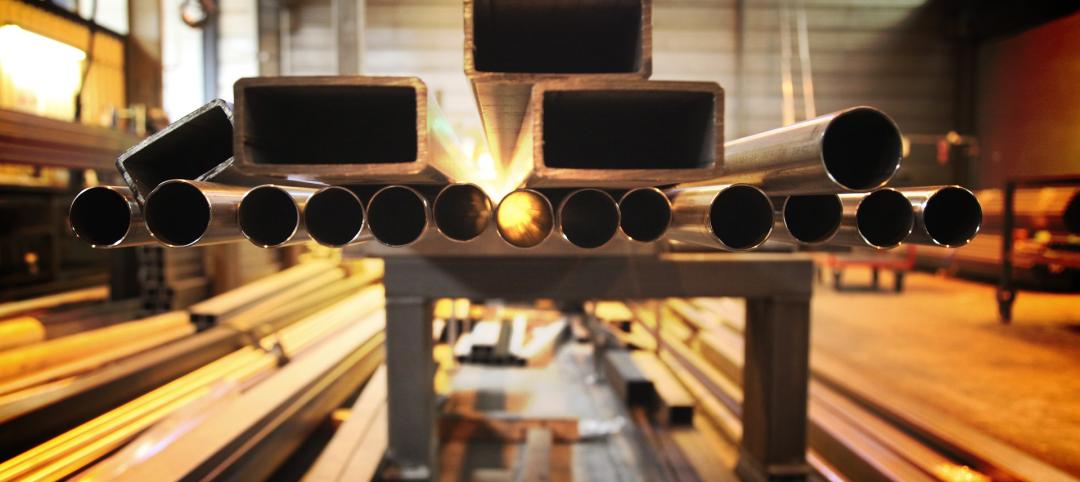The American Institute of Architects (AIA) and its Committee on the Environment (COTE) have selected the top 10 examples of sustainable architecture and ecological design projects that protect and enhance the environment. The projects will be honored at the AIA 2015 National Convention and Design Exposition in Atlanta.
The COTE Top Ten Awards program, now in its 19th year, is the profession's most rigorous recognition program for sustainable design excellence. The program celebrates projects that are the result of a thoroughly integrated approach to architecture, natural systems and technology. They make a positive contribution to their communities, improve comfort for building occupants and reduce environmental impacts through strategies such as reuse of existing structures, connection to transit systems, low-impact and regenerative site development, energy and water conservation, use of sustainable or renewable construction materials, and design that improves indoor air quality.
The Bullitt Center; Seattle
The Miller Hull Partnership
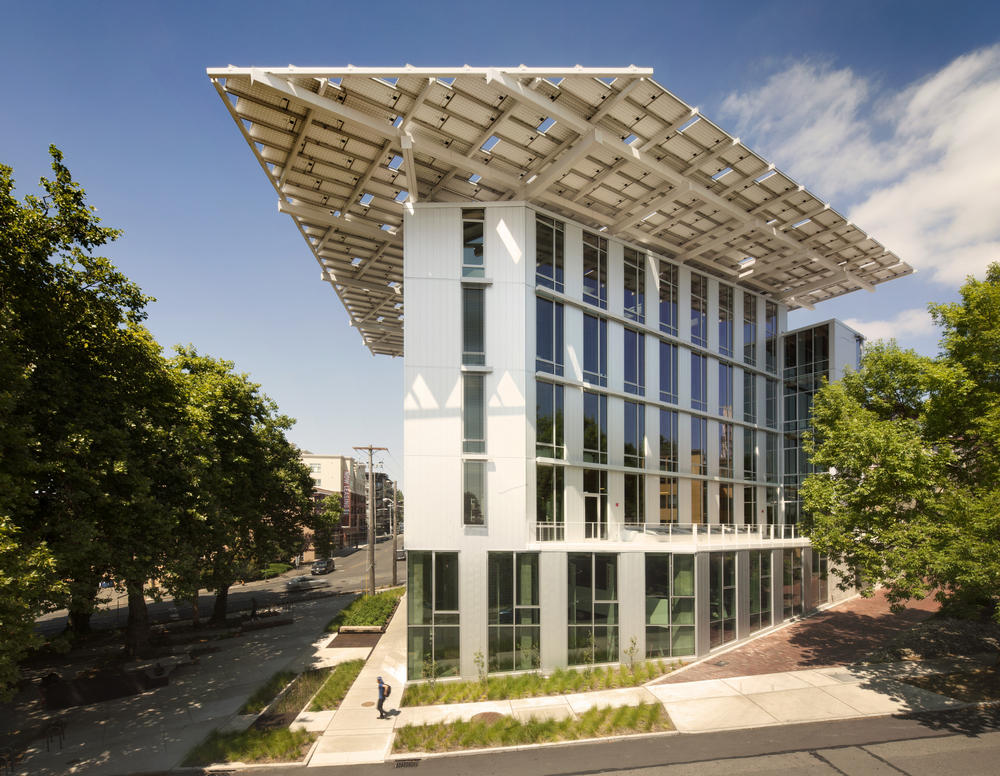 Image: Nic Lehoux
Image: Nic Lehoux
The Bullitt Center is a high performance urban office building demonstrating a commercially-viable structure with essentially no environmental footprint is possible; it is the largest certified Living Building. Performance metrics drove building design with every material and system in the self-sustaining six-story, 52,000-square-foot office building evaluated toward the goal of net zero energy, water, and waste—resulting in an unprecedented Energy Use Intensity (EUI) of 10kbtu/sf/yr. Sustainable design moves responding to regional context include operable floor-to-ceiling windows for daylight and fresh air, heavy-timber framing, a transparent ‘irresistible stair’ with dramatic views, and overhanging roof characteristic of Northwest design vernacular. A new paradigm for design, the building serves as a living laboratory for high-performance architecture and sustainability education seeking to influence the way society views the relationship of a building to its environment.
CANMET Materials Technology Laboratory; Hammilton, Ontario, Canada
Diamond Schmitt
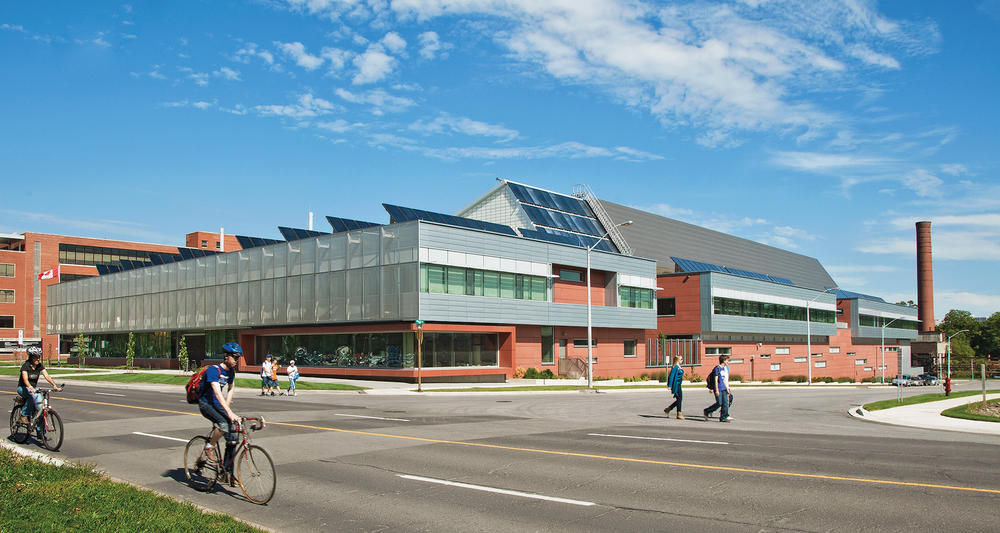 Image: Elizabeth Gyde
Image: Elizabeth Gyde
This 174,300-sf lab and support office space incorporates a complex industrial program of pilot scale casting, rolling and welding, corrosion, and mechanical testing alongside microstructure evaluations and radiation testing. With over 800 customized pieces of equipment in addition to generic lab equipment CANMET is a complex energy use intensive building. The pursuit of LEED Platinum triggered a comprehensive Integrated Design Process (IDP), which was pivotal to the resulting design. A building charter targeted significant energy use reduction to exceed the 2030 Challenge and achieve a 70% energy use reduction, a goal that is particularly challenging for an industrial lab building.
Collaborative Life Sciences Building for OHSU, PSU & OSU; Portland, Ore.
SERA Architects
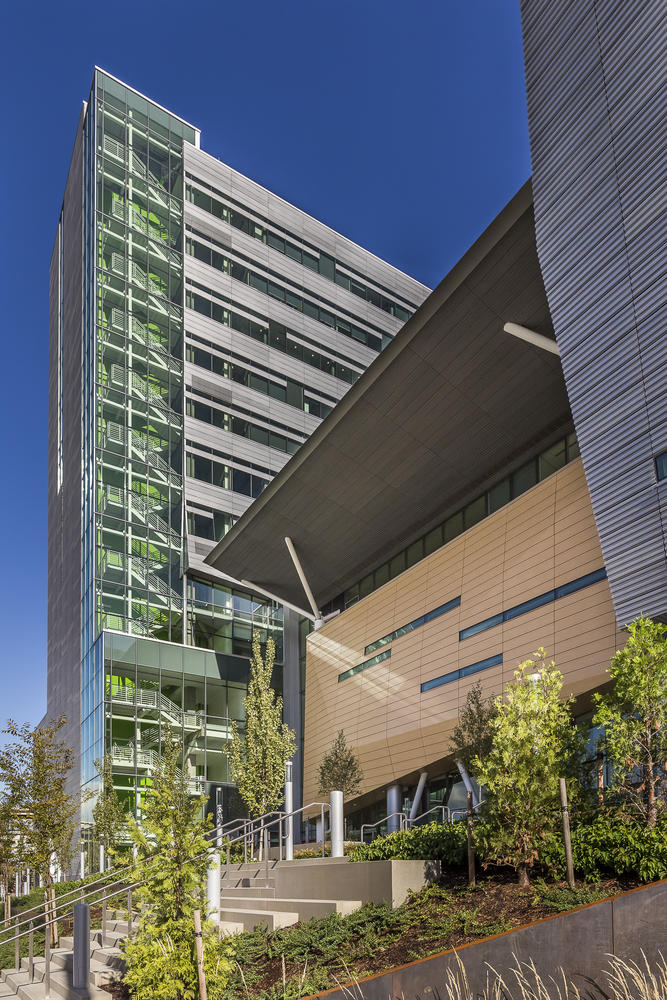 Image: Alene Davis Photography
Image: Alene Davis Photography
Oregon Health & Science University, Portland State University, and Oregon State University partnered to create a new allied health, academic, and research building. Located on a former brownfield site constrained by adjacent roadway and bridge construction, the building is conceived as an innovative model of interdisciplinary health sciences education, research, and education. Interior glazed walls foster “research and teaching on display,” allowing occupants and pedestrians to view the activity in labs and classrooms.
The atrium offers dynamic connections between program elements through connecting bridges and informal study areas for students. As one of only two projects in the U.S. over a half million square feet that has been certified Platinum under the LEED NC v2009 rating system, this project incorporates a number of sustainable design innovations including: transformation of an existing brownfield, light pollution reduction, stormwater management, ecoroofs to reduce stormwater runoff, nonpotable water for toilet flushing, atrium heat recovery, and low ventilation fume hoods.
E+ // 226-232 Highland Street Townhouses; Boston
Interface Studio Architects (ISA) and Urbanica Design
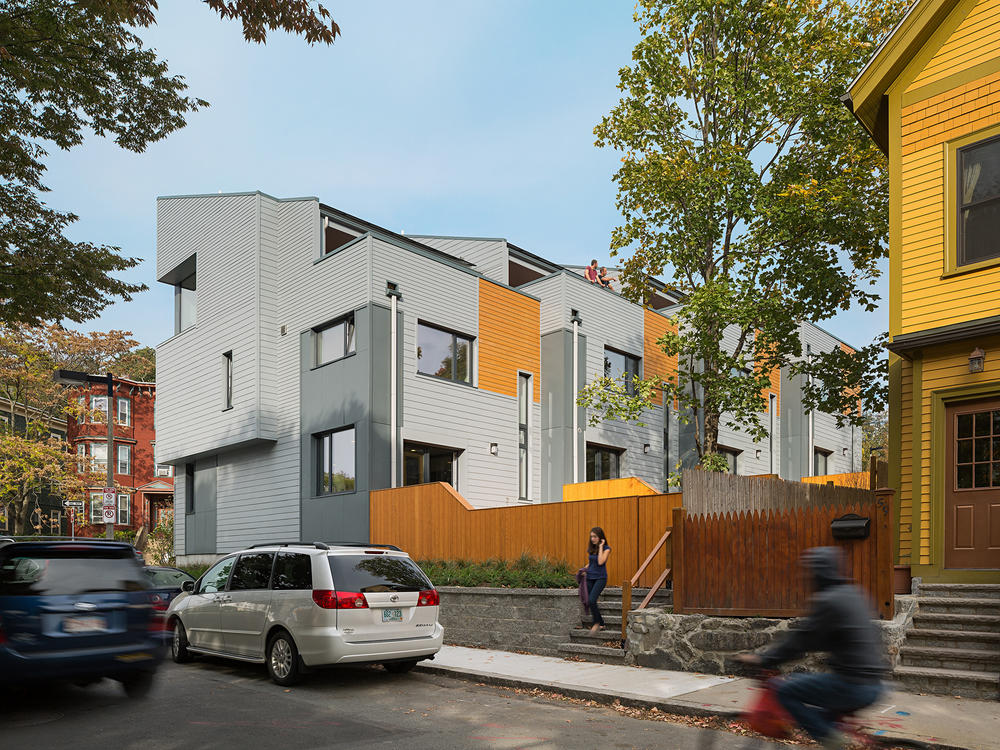 Image: Sam Oberter
Image: Sam Oberter
The project was conceived as a replicable prototype for family friendly, energy efficient, urban townhomes. Each unit is approximately 1850-square-feet, with flexible living areas, 3 bedrooms, and 2.5 bathrooms. The project was the first completed under the City of Boston’s Energy Plus (E+) Green Building Program, a pilot initiative to develop energy positive sustainable housing. The project team was chosen through a design competition organized by the Boston Redevelopment Authority (BRA) and the Department of Neighborhood Development. Incorporating both passive and active energy efficiency measures, the project has achieved HERS ratings between 6 and 9, and is certified LEED for Homes Platinum.
Hughes Warehouse Adaptive Reuse; San Antonio
Overland Partners
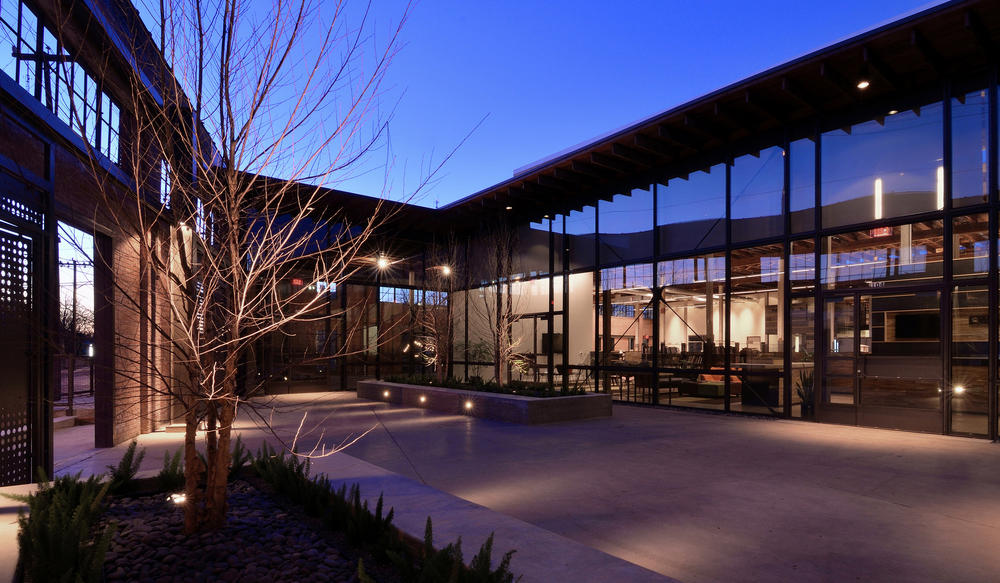 Image: AIA
Image: AIA
This adaptive reuse project transforms an early 20th century warehouse into an innovative but functional studio space. The balance between maintaining the historic integrity of the building and improving energy efficiency was critical for the nearly 100-year-old building. As a result, the design team focused on preserving the open plan space and leaving interventions light in order to maximize flexibility of the space for future users as well as to encourage collaboration amongst staff and minimize material usage, achieved through the elimination of private offices. Though it decreased leasable square footage, the project’s newly inserted courtyard became integral to the design, providing a place for public life, improving daylighting, and decreasing the amount of conditioned space.
Military Medical Hospital; San Antonio
RTKL
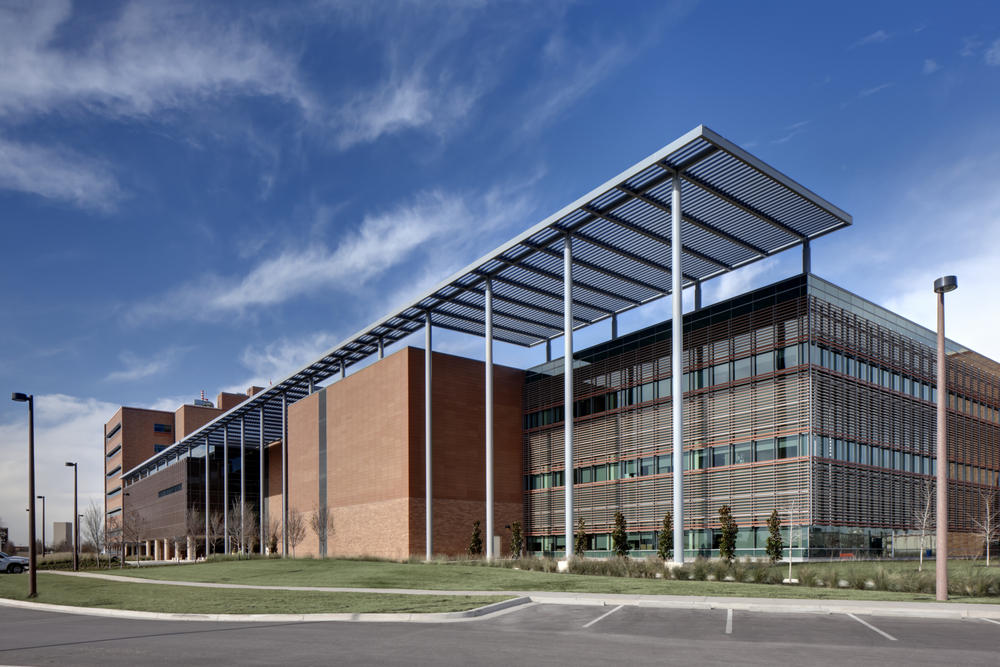 Image: AIA
Image: AIA
San Antonio Military Medical Center (SAMMC) is home to a world class burn treatment and recovery unit, and the design both accommodates this function and draws its architectural inspiration from it. A long trellis canopy spans the length of the south elevation, throwing dappled shade on the building and presenting the welcoming image of a large veranda. Under this umbrella, the footprint of the façade varies to break down the scale of a very long elevation while shading the building as the sun moves toward the west. Surfaces at the front edge have no fenestration, avoiding heat gain, while the surfaces at the back of the trellis are extensively glazed and shaded. These simple architectural gestures humanize the scale and image of the medical center while aiding environmental performance.
New Orleans BioInnovation Center (NOBIC); New Orleans
Eskew+Dumez+Ripple
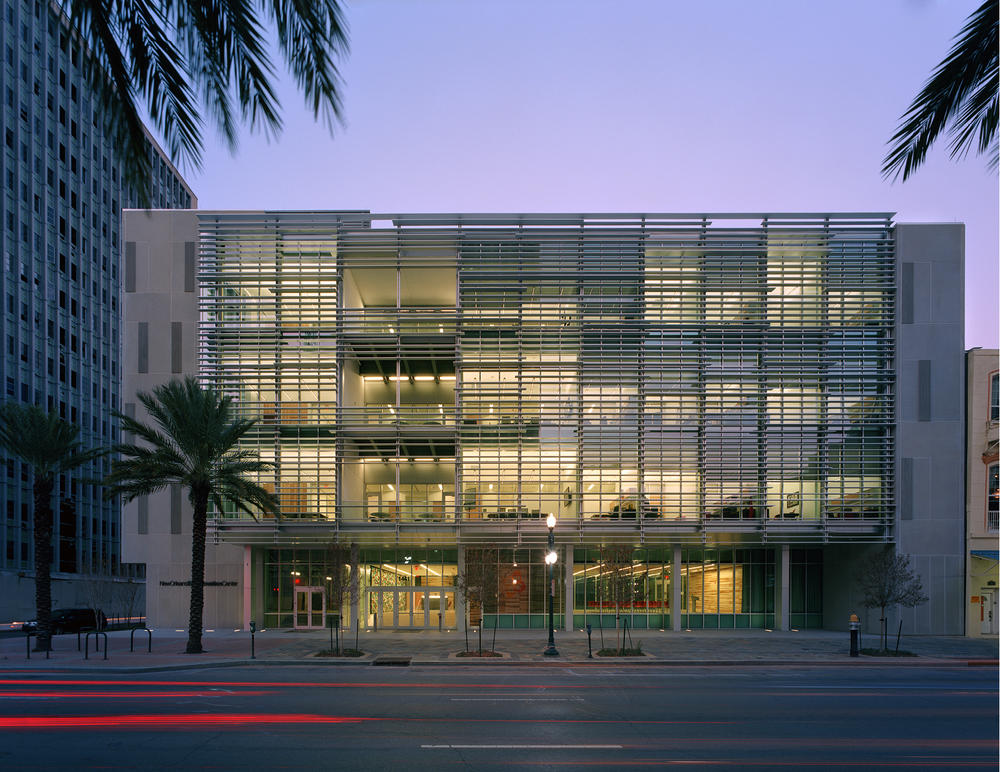 Image: Timothy Hursley
Image: Timothy Hursley
The NOBIC, a LEED Gold research facility serves as an incubator for biotech startups, helping ideas conceived locally to become local jobs and industries. The facility includes a flexible 100 person conferencing center, breakout spaces, and a 2,000-sqaure-foot café. The design reinterprets vernacular regional climate responsive strategies—the slatted shutter, the landscaped courtyard water feature, the sheltered porch—to provide a facility that is both of its place and of its time. The facility captures rainwater and diffuses it to plants and soils on site, and is supplemented by the AC condensate (up to 20,000 gallons per week), which provides all landscape irrigation on site.
Sweetwater Spectrum Community; Sonoma, Calif.
Leddy Maytum Stacy Architects
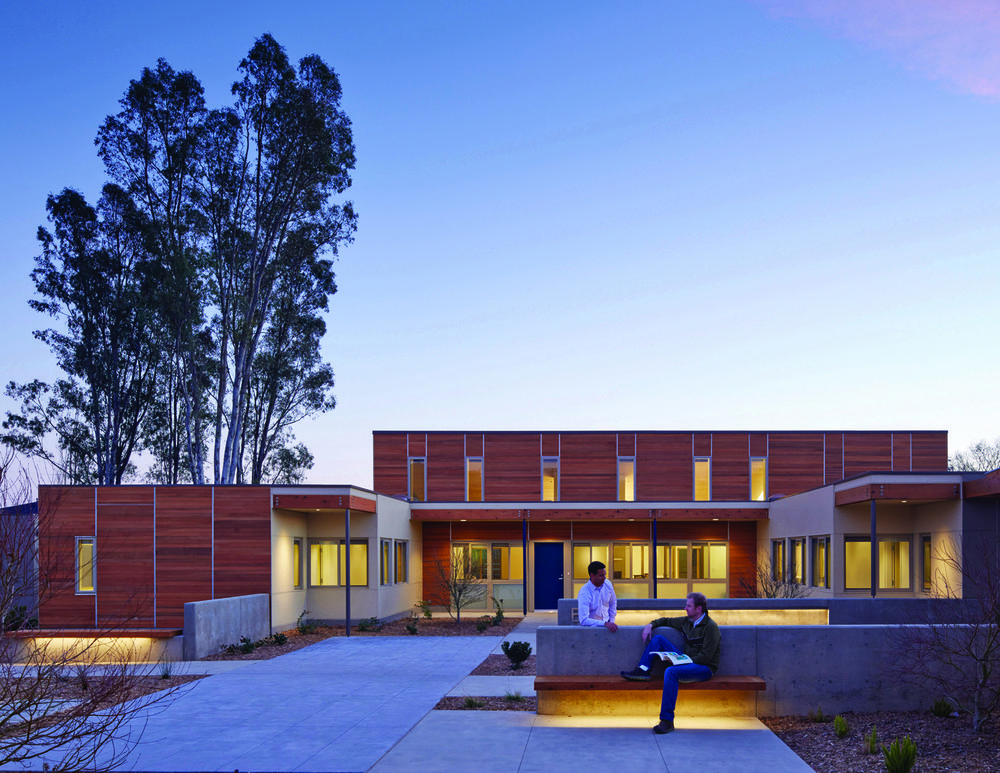 Image: Tim Griffith
Image: Tim Griffith
Sweetwater Spectrum is a new national model for supportive housing for adults with autism, offering life with purpose and dignity. The project includes four homes, a community center, therapy pools and urban farm. Practical sustainable design strategies promote health and wellness, reduce energy consumption, and offer multiple long term benefits to residents, staff, and the Sonoma community. The project is a Pacific Gas & Electric Zero Net Energy Pilot Project and exceeds the 2030 Commitment. A variety of passive and active strategies, including building orientation, high performance envelope, building integrated photovoltaic, and solar thermal panels reduce energy consumption by 88% from baseline.
Tassafaronga Village; Oakland, Calif.
David Baker Architects
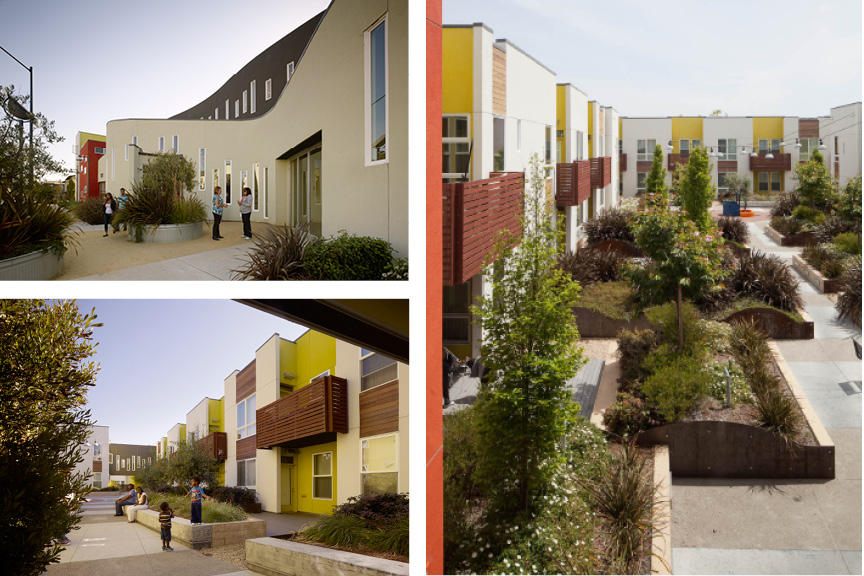 Image: Matthew Millman (left)/Bruce Damonte (right)
Image: Matthew Millman (left)/Bruce Damonte (right)
This project includes a 60 unit affordable apartment building, 77 affordable attached "townhouses" for rent (clustered in 13 buildings), and 20 supportive apartments with onsite medical clinic. Deep roof overhangs, fin walls, site plantings, and thoughtful window placement provide resilience against heat spikes, relieving high southern, and hot western sun. The building design provides comfortable daylight, views, and airflow by increasing the exposure in individual rooms and units. All rooms within each unit meet the standard for natural ventilation under ASHRAE 62.22007. A well-insulated thermal envelope and reduced infiltration allow improved comfort and protection from odors, noise, and other pollutants.
University Center - The New School; New York City
Skidmore, Owings & Merrill LLP
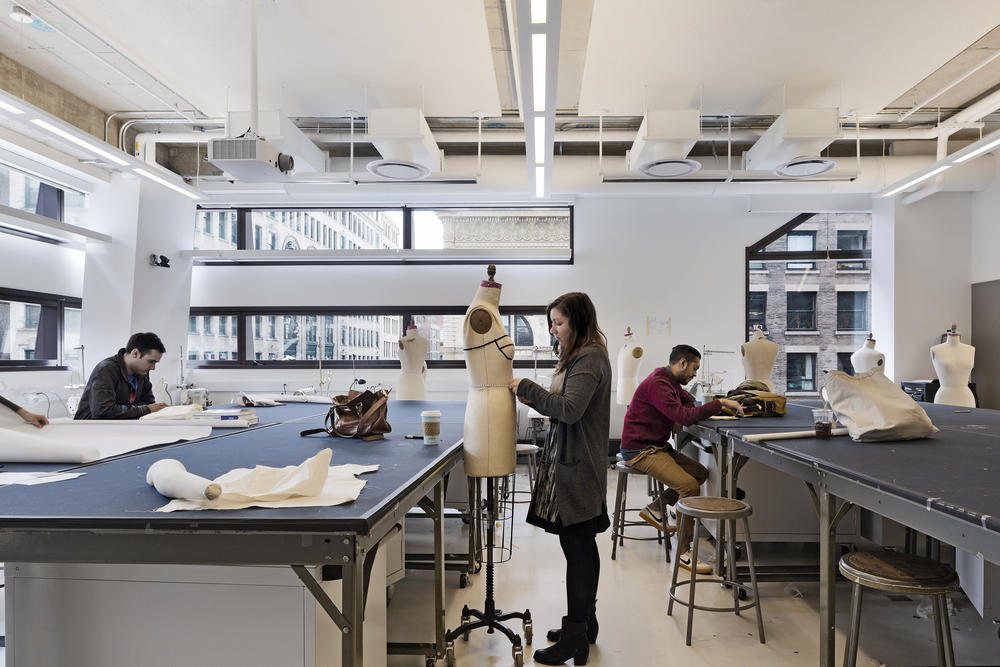 Image: James Ewing
Image: James Ewing
The LEED Gold building provides space for all aspects of a traditional campus, with 200,000 square feet of academic space on the first seven floors and 150,000 square feet for a 600-bed student residence on the levels above. A thermal energy storage unit was developed to create and store ice at night, smoothing the load of the building’s daytime operations and allowing systems to be both downsized and right sized. Constructed with an extensive 13,500-square-foot green roof, able to detain up to 40% of annual rainfall, this project enabled the design team to take advantage of a combined heat and power system, combining onsite generation with domestic hot water preheating for the dormitory areas, and a black water treatment system combined with low flow features reduce the building’s potable water consumption by 75% over baseline.
The 2015 COTE Top Ten Green Projects jury includes:
- John Quale, LEED AP BD+C, Associate AIA, University of New Mexico School of Architecture + Planning
- Alex Wilson, Resilient Design Institute
- Peter Busby, C.M., FRAIC, MAIBC, LEED Fellow, Perkins+Will
- Peter Rumsey, PE, Point Energy Innovations
- David John Neuman, Neu Campus Planning, Inc.
Related Stories
Contractors | Jun 30, 2023
Construction industry task force aims for standardized carbon reporting
A newly formed Associated General Contractors of America (AGC) task force on decarbonization and carbon reporting will address the challenges around reporting and reducing carbon emissions in the construction industry.
Apartments | Jun 27, 2023
Dallas high-rise multifamily tower is first in state to receive WELL Gold certification
HALL Arts Residences, 28-story luxury residential high-rise in the Dallas Arts District, recently became the first high-rise multifamily tower in Texas to receive WELL Gold Certification, a designation issued by the International WELL Building Institute. The HKS-designed condominium tower was designed with numerous wellness details.
Green | Jun 26, 2023
Federal government will spend $30 million on novel green building technologies
The U.S. General Services Administration (GSA), and the U.S. Department of Energy (DOE) will invest $30 million from the Inflation Reduction Act to increase the sustainability of federal buildings by testing novel technologies. The vehicle for that effort, the Green Proving Ground (GPG) program, will invest in American-made technologies to help increase federal electric vehicle supply equipment, protect air quality, reduce climate pollution, and enhance building performance.
Industrial Facilities | Jun 20, 2023
A new study presses for measuring embodied carbon in industrial buildings
The embodied carbon (EC) intensity in core and shell industrial buildings in the U.S. averages 23.0 kilograms per sf, according to a recent analysis of 26 whole building life-cycle assessments. That means a 300,000-sf warehouse would emit 6,890 megatons of carbon over its lifespan, or the equivalent of the carbon emitted by 1,530 gas-powered cars driven for one year. Those sobering estimates come from a new benchmark study, “Embodied Carbon U.S. Industrial Real Estate.”
Mechanical Systems | Jun 16, 2023
Cogeneration: An efficient, reliable, sustainable alternative to traditional power generation
Cogeneration is more efficient than traditional power generation, reduces carbon emissions, has high returns on the initial investment, improves reliability, and offers a platform for additional renewable resources and energy storage for a facility. But what is cogeneration? And is it suitable for all facilities?
Multifamily Housing | Jun 15, 2023
Alliance of Pittsburgh building owners slashes carbon emissions by 45%
The Pittsburgh 2030 District, an alliance of property owners in the Pittsburgh area, says that it has reduced carbon emissions by 44.8% below baseline. Begun in 2012 under the guidance of the Green Building Alliance (GBA), the Pittsburgh 2030 District encompasses more than 86 million sf of space within 556 buildings.
Resiliency | Jun 14, 2023
HUD offers $4.8 billion in funding for green and resilient building retrofit projects
The Department of Housing and Urban Development (HUD) recently released guidelines for its Green and Resilient Retrofit Program (GRRP) that has $4.8 billion for funding green projects.
Steel Buildings | May 19, 2023
New manufacturing processes can make steel construction a greener option and add U.S. jobs
“Green steel” that is manufactured using hydrogen generated with renewable energy makes its use as a building material more feasible for environmentally conscious designers and clients. Sustainable manufacturing processes, which are economically viable in the U.S., could also revive steelmaking in the country as the metal becomes more attractive for green building.
Office Buildings | May 15, 2023
Sixteen-story office tower will use 40% less energy than an average NYC office building
This month marks the completion of a new 16-story office tower that is being promoted as New York City’s most sustainable office structure. That boast is backed by an innovative HVAC system that features geothermal wells, dedicated outdoor air system (DOAS) units, radiant heating and cooling, and a sophisticated control system to ensure that the elements work optimally together.
Headquarters | May 9, 2023
New Wells Fargo development in Texas will be bank’s first net-positive campus
A new Wells Fargo development in the Dallas metroplex will be the national bank’s first net-positive campus, expected to generate more energy than it uses. The 850,000-sf project on 22 acres will generate power from solar panels and provide electric vehicle charging stations.










